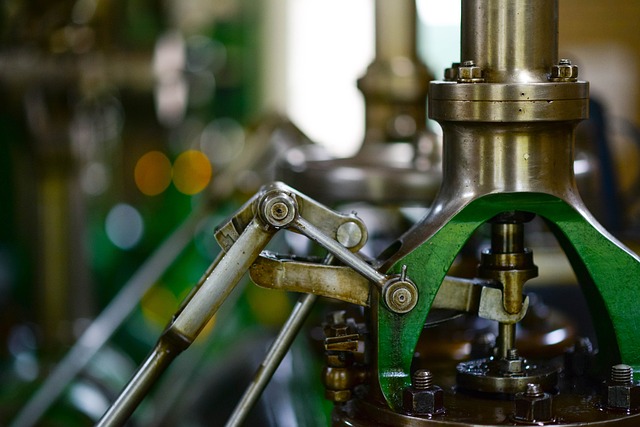The Role of Robotics in Enhancing Manufacturing Processes
In today’s fast-paced world, manufacturing processes undergo constant transformation. Technology innovation, particularly robotics, plays a significant role in this evolution. The rise of robots in manufacturing is not just a trend; it’s a revolution. Robotics encompasses a range of technologies designed to automate tasks, increase efficiency, and improve product quality. As companies focus on enhancing their manufacturing processes, robots emerge as vital allies, streamlining operations and reducing labor costs.
One of the key benefits of robotics in manufacturing processes is enhanced efficiency. Robots can perform repetitive tasks with unwavering accuracy and speed. For instance, in an assembly line setting, robots can assemble components in a fraction of the time it would take a human worker. This efficiency leads to faster production cycles. Businesses experience shorter lead times, which helps them respond swiftly to market demands. Moreover, robots never suffer from fatigue or distraction, which means they can work continuously, contributing to higher overall productivity levels.
Automation through robotics also brings consistency to manufacturing processes. Human error is an unavoidable aspect of manual labor; however, robots eliminate this variability. They adhere strictly to predefined parameters, ensuring that each product manufactured meets the specified quality standards. This consistency leads to reduced waste and minimizing costly errors. Companies can maintain quality control throughout their production lines, resulting in improved customer satisfaction. As businesses grow, maintaining quality becomes even more crucial, and robotic systems provide a reliable solution to meet this demand.
The Various Applications of Robotics
The versatility of robotics is one of its most remarkable features. Robots can seamlessly integrate into various stages of the manufacturing process, from assembly and welding to painting and packaging. In assembly, for example, manufacturers often utilize robotic arms designed to handle delicate components. These robots operate with precision, executing tasks like placing small parts into larger assemblies, which significantly reduces the risk of damage.
In the automotive industry, welding robots demonstrate another area where robotics shines. These machines perform spot welding and seam welding on vehicle frames, creating sturdy joints that meet safety standards. The speed and precision with which robots work increase production rates and ensure uniformity across vehicles. Furthermore, manufacturers can configure robots to adapt to different vehicle models without extensive reprogramming, demonstrating their flexibility in manufacturing processes.
Painting and surface treatment pose challenges due to the need for even application and precision. Robots excel in this realm as well. Equipped with advanced sensors, they can detect surface imperfections, which allows them to adjust their spray patterns accordingly. By employing robotics for painting tasks, manufacturers can cut down on waste, minimize overspray, and achieve a flawless finish every time. This level of detail enhances the overall presentation and quality of the final product.
The Impact of Robotics on Workforce Dynamics
As robotics technology continues to advance, it significantly affects workforce dynamics within the manufacturing sector. The introduction of robotics might evoke concerns about job displacement among workers. However, it’s essential to understand that robotics does not necessarily eliminate jobs; rather, it transforms them. A paradigm shift occurs, requiring workers to adapt to new roles that focus more on supervision and maintenance of advanced technology.
Workers can take on more strategic positions, overseeing robotic systems and ensuring their efficient performance. In this way, employees become invaluable assets, as their ability to analyze complex situations leads to improved workflows. Companies often invest in training programs to help their workforce transition into these new roles. Upskilling initiatives prepare workers for a technology-dominated environment, emphasizing the importance of adaptability in today’s job market. Moreover, fostering a culture of continuous learning can place companies ahead of their competitors.
Challenges Faced in Implementing Robotics
While the benefits of robotics are clear, challenges remain when integrating these technologies into manufacturing processes. The initial expense of robotics technology holds many companies back. Not only do businesses need to invest in the hardware, but they must also consider the costs for maintenance and training employees on these new systems. However, it’s crucial to view this as a long-term investment. Although the upfront costs can be high, the returns through increased efficiency, reduced errors, and lower labor costs often outweigh these initial expenses.
Another pertinent challenge lies in the integration of robotics with existing systems. Manufacturers often rely on legacy systems that may not seamlessly communicate with new robotic technologies. Businesses might face compatibility issues, leading to gaps in information flow and workflow disruption. Successful integration requires careful planning, including conducting thorough assessments of current systems and determining how best to incorporate robotics. Engaging expert consultants in the development process can help bridge these gaps and ensure a smoother implementation.
Future Trends in Robotics for Manufacturing Processes
The future of robotics in manufacturing processes shines brightly as it thrives on continuous technological advancement. For instance, artificial intelligence (AI) integration creates opportunities for smarter robotic systems. AI can enable robots to learn from their experiences, optimizing their operations and adapting to changing environments. This turns robots into more than mere tools; they become intelligent systems capable of making decisions on the fly.
Furthermore, collaborative robots, or cobots, are gaining traction in manufacturing sectors. Unlike traditional robots that operate in isolation, cobots work alongside human employees, enhancing productivity while maintaining safety standards. They assist in tasks that require both human dexterity and robotic precision, fostering true teamwork on the factory floor. This trend signifies a shift toward a more seamless interaction between humans and machines, showcasing a future where both co-exist harmoniously.
Environmental Sustainability and Robotics
Manufacturers today are not merely focused on efficiency; they are also increasingly aware of the importance of environmental sustainability. Robotics plays a vital role in achieving these objectives. Advanced robotic systems can minimize waste during production, ensuring that materials are used efficiently. With robotics, manufacturers can implement precise material handling processes that reduce excess waste and optimize resource consumption. Moreover, many robots operate with energy-efficient technologies, contributing to reduced carbon footprints.
Also, robotics can facilitate recycling initiatives within manufacturing processes. With robots capable of identifying and sorting different materials, businesses can streamline recycling efforts, ensuring that valuable resources are not wasted. As public awareness of eco-friendly practices grows, manufacturers can leverage robotics to enhance sustainable practices in their production lines, resonating with environmentally conscious consumers.
Cost-Benefit Analysis of Robotics in Manufacturing
When businesses contemplate investing in robotics, conducting a thorough cost-benefit analysis becomes imperative. Understanding potential returns can help justify the initial expenses associated with robotic implementation. Savings from decreased labor costs due to reduced manual labor deployments often stand out as significant. Additionally, companies can factor in increased output, as robots often work faster than human workers, leading to higher profitability.
It’s also vital to consider intangible benefits. Enhanced quality control not only reduces waste but also strengthens brand reputation. With robotics ensuring each product meets quality standards, manufacturers can cultivate consumer loyalty and trust. Diverse, satisfied customers will contribute to sustained business growth. By incorporating these elements into their analysis, businesses can develop a clearer picture of the full range of benefits that robotics brings to manufacturing processes.
Conclusion: Embracing Robotics for Future Growth
In conclusion, the role of robotics in enhancing manufacturing processes is multifaceted and dynamic. From improving efficiency and consistency to impacting workforce dynamics and environmental sustainability, robotics signifies a pivotal aspect of modern manufacturing. Industries that embrace these tech innovations set themselves up for long-term success. As the future unfolds and robotics technology evolves, manufacturers must stay ahead of the curve, adapting to harness the full potential of robotics in their operations.
FAQ
- What are the primary benefits of using robotics in manufacturing?
- The primary benefits include increased efficiency, enhanced product quality, reduced labor costs, and the ability to operate continuously without fatigue.
- Are robots replacing human workers in manufacturing?
- While robots can automate certain tasks, they often enhance human productivity rather than replace workers. They change job roles to focus on supervision and oversight.
- What are collaborative robots (cobots)?
- Collaborative robots, or cobots, are designed to work alongside human workers, assisting them with tasks to enhance productivity and safety.
- How does robotics contribute to environmental sustainability in manufacturing?
- Robotics helps minimize waste, optimize resource usage, and can improve recycling efforts, all contributing to a lower carbon footprint.
- What should companies consider when implementing robotics?
- Companies should consider the upfront costs, the integration with existing systems, employee training, and conducting a cost-benefit analysis to assess potential returns.



